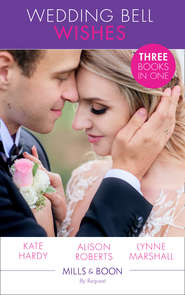По всем вопросам обращайтесь на: info@litportal.ru
(©) 2003-2025.
✖
A Doctor for Keeps
Автор
Год написания книги
2018
Настройки чтения
Размер шрифта
Высота строк
Поля
“Watch the language,” Kent warned benevolently. “And, Steven, that’s not exactly why we have the beer barn. It’s—”
“That’s what you said to Officer Gunnar that time.”
Kent flashed a sparkling look at Desi over Steven’s head. He enjoyed his son as much as she did. She lifted her brows. You get yourself out of this one.
“That was just an observation between him and me, and for your information, I said ‘geezers,’ not ‘farts.’”
Steven giggled. “Fart is a funny word. I like it better. Fart, fart, fart.” He dissolved into a fit of giggles.
“That’s enough of that.” Kent tried to sound stern, but the twitch at the corner of his mouth told a different tale.
Desi grinned at the father and son’s candid conversation during the drive over. Maybe, if she kept quiet, she’d learn a heck of a lot more about Heartlandia—or Hjartalanda, as Kent had called it—than she’d found out from her grandmother so far.
Steven taught her a hand game for the rest of the short drive over, where one person would place their palms on top of the other, and the bottom person had to try to slap the upper person’s hands. Something about his earnest approach to everything he did made her warm inside. He was easy to giggle, too, and she joined right in, even as she nearly got slapped silly from his quick reflexes.
They parked outside the central section of town and hiked up toward the main street called Heritage. Desi glanced far off at one end to see what looked like an official building, maybe city hall, with a totem-pole-type monument in front. She turned and gazed down to the other end, noticing storefronts, restaurants and other businesses in what seemed like a time warp to the 1950s architecture and style with evidence of 1970s expansion. One large building, six stories high, sat apart from the other mostly single-or two-story frames. It smacked of the Art Deco era of the twenties and thirties with geometric domes and lavish ornamental copper accents, which had turned green. Desi wondered if there was an ordinance about not building tall after The Heritage Hotel and Performance Center went up.
She’d slowed her pace to take it all in, and Steven grabbed her hand, pulling her along. Clusters of people grouped around the street corners and more lined the curbs with chairs and blankets to sit on. It seemed as if every person in the city had shown up for the parade.
“Move back, folks. Make way for the parade.” A sturdy, broad-shouldered police officer spoke to the thickening group on one particular corner. The guy was built as if he could make a living on the side as a cage fighter.
“Quit harassing the locals. Cut us some slack, Sergeant, would you?” Kent’s outburst made Desi tense. This wasn’t the kind of guy anyone in their right mind should want to challenge.
The intense-eyed, equally handsome and obviously Scandinavian male turned to Kent. The grim expression on his face broke apart into a wide grin. “You give me a hard time and I’ll haul your—” he glanced at Steven then back to Kent “—backside in.”
The men shook hands, and Desi knew immediately they were friends. Respect shone through Kent’s and the officer’s eyes, and something else, too—something that looked a lot like brotherly love.
The policeman with light brown hair and flashing green eyes bent to greet Steven. “How’d you talk your old man into bringing you to the parade this year?”
“I asked my piano teacher along,” Steven said, pointing to Desi.
Feeling suddenly on display, she made a closed-lip smile, stuffing her hands into the back pockets of her jeans. The officer looked her way and tipped his head, obvious interest in his gaze. She gave a single nod back.
“This is Mayor Rask’s granddaughter, Desdemona,” Kent said, reaching for her arm and encouraging her forward. “And this is Gunnar Norling, my best friend since grammar school.”
“Hey. Nice to meet you,” he said, casting a quick sideways glance at Kent, ensuring he’d get the lowdown later, before smiling at her.
“Call me Desi.”
“Okay.” He reached for her hand.
A drum-and-bugle corps rent the air, alerting the crowd the parade was about to begin, and Gunnar’s attention immediately went elsewhere.
“Enjoy the parade, guys. I’m on duty.” Off he went, looking attractive and official in the dark blue uniform.
The next thing Desi saw was the flag corps consisting of six teenage boys proudly displaying the five Scandinavian banners plus the U.S. pennant in the center. Each young man wore a vest in the traditional color of their country as they walked to the rhythm of three snare drummers directly behind them. Then came her grandmother sitting in the cab of an open horse-drawn carriage, waving demurely as she progressed down the street.
Desi waved wildly along with Steven and Kent, and Gerda’s eyes brightened, stretching her Mona Lisa smile into a toothy grin.
As the procession continued, individual countries paraded their famous costumes and music while walking beside simple floats and automobiles.
The women and girls wore ankle-length dresses covered with colorful aprons and shawls or capes. Some wore white scarves on their heads, which made them look like flashy nuns, or little hats trimmed in red or blue. All the women wore thick stockings and what looked like homemade leather shoes. Large beaded necklaces seemed to be in vogue with many of the women in costume.
The men’s outfits reminded Desi of a famous TV commercial for cough drops. She especially liked the bright vests and little turbans or knit caps with tassels some of the men wore.
The intense colors on all of the apparel impressed Desi—mostly reds and blues with some yellow—along with the pride and joy that poured out of every participant as they strolled by. She glanced at Steven and Kent and saw the same pride and joy on their faces.
“That’s Viking,” Kent said, pointing to one group.
Steven saw one of his friends walking with the adults and gave a holler. Kent grabbed him and gave him a noogie as they watched the group pass. The father and son touched affectionately a lot, she realized, and seemed to get along great. Mother or not.
“That’s Swedish, my people,” Kent said, as the next float approached.
The subtle differences between the groups were hard for her to see, yet everyone else seemed to know exactly who was who. What must it be like to belong so deeply to something, to have a heritage you could trace back thousands of years and know like the back of your hand? “Here come the Danes.” Kent smiled and glanced at her. In the front row of participants was a young girl of mixed race, like herself, and she led the way. What was he trying to communicate, that she wasn’t the only biracial person in town?
Heck, half of her family tree was cut off at the very first fork, a blunt and wide cut that ended with a single name—Victor Brown.
“Here come the Fins.” Kent continued his parade coverage, his hands on Steven’s shoulders and the boy’s head resting against him, just above his belt.
Desi couldn’t tear her attention away from the genealogy marching before her. She was made up of just as much of this as the other mysterious side, and today she deeply felt the Scandinavian connection.
“Here’s my favorite, the Icelanders!” Steven jumped in, pointing ahead. “They always wear the funnest hats.”
Besides the um-pa-pa sounds coming from some of the floats, there were others with fiddles that sounded so similar to what Desi knew as Celtic tunes. There was maypole-type dancing between some floats and livelier, showier footwork, knee and shoe slapping, among the boys and men between other floats. Her cheeks soon grew tired from all of the grinning.
As the parade went on, more modern versions of Scandinavian clothing came through. The easily spotted knit sweaters and caps, and stylish sheep-fur-lined boots sported by preschoolers and kindergartners grabbed her attention. A group of teens showed off what could only be described as Scandinavian grunge, complete with famous storybook red braids and raccoon-styled makeup, while doing gymnastics and a little street dancing.
Something was brewing and bubbling in Desi’s chest. Could she see herself in the light faces of these people? Her mother’s Nordic beauty was hard to detect when Desi looked in the mirror, yet it was there—her high cheekbones, the shape of her brows, the expressive eyes. Her mother was inside her—in every cell and in half of her DNA.
Her mother had run away and given up her entire life for Desi. She owed it to her to keep her mind and heart open to this town and all that it was and could offer. She needed to stick around long enough to learn who she was before she took off searching for the other half.
An hour after it had started, the parade came to a close with a final um-pa-pa group, and a small, sweaty hand on hers brought her back to the moment.
“Let’s get over to the booths before the lines get too long,” Steven said, tugging her down the street. So far the weather had cooperated, the earlier gray clouds parting, revealing bright blue sky above.
Kent walked a few feet away from them like a tall, benevolent chaperone giving them space.
“Is this where everything happens in town?” she asked over her shoulder.
“Pretty much. We’ve got a lot of touristy shops for the cruise-line visitors down toward the docks, but most of the travelers like to come up here to eat. We’ve got some great restaurants.”
One redbrick restaurant and bar had a few tables out front and a black-and-white canopy under which an older African-American man sat drinking coffee as they passed. He wore a starched white chef’s shirt and hat placed at a jaunty angle on his head. Their eyes met, as two standouts might, and he tipped his head at her without a hint of a smile. She smiled and repeated the gesture, noticing the name of the restaurant and promising to find her way back at some point. Lincoln’s Place. “Good food since 1984. Live music and Happy Hour specials daily at the bar,” the sign said.
Kent waved and the man lifted his palm in return.
Down the street was a small white restaurant, with a blue-and-yellow canopy out front, called Husmanskost.
“What’s that?”











